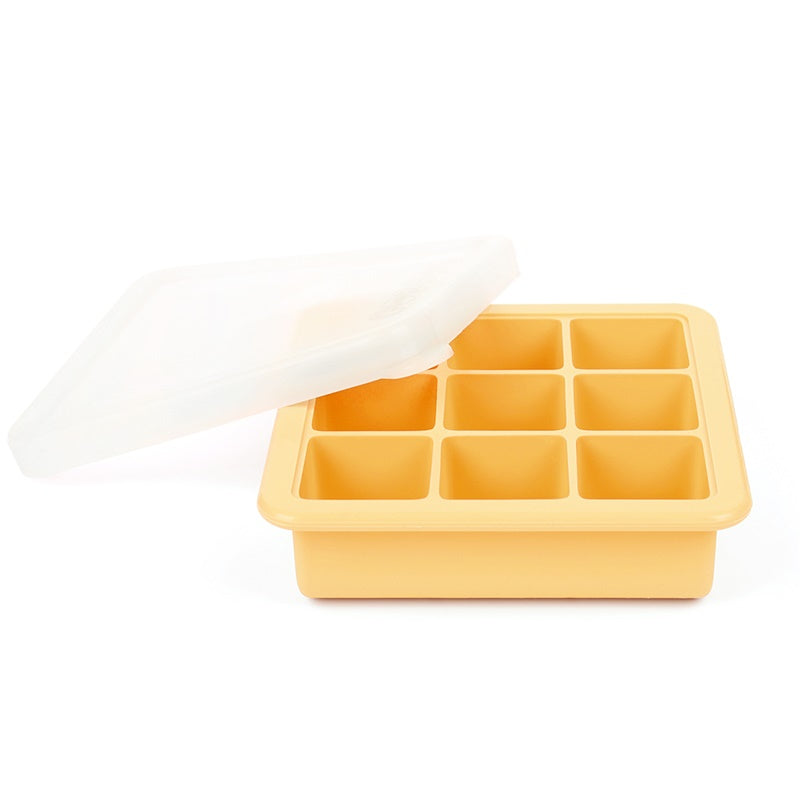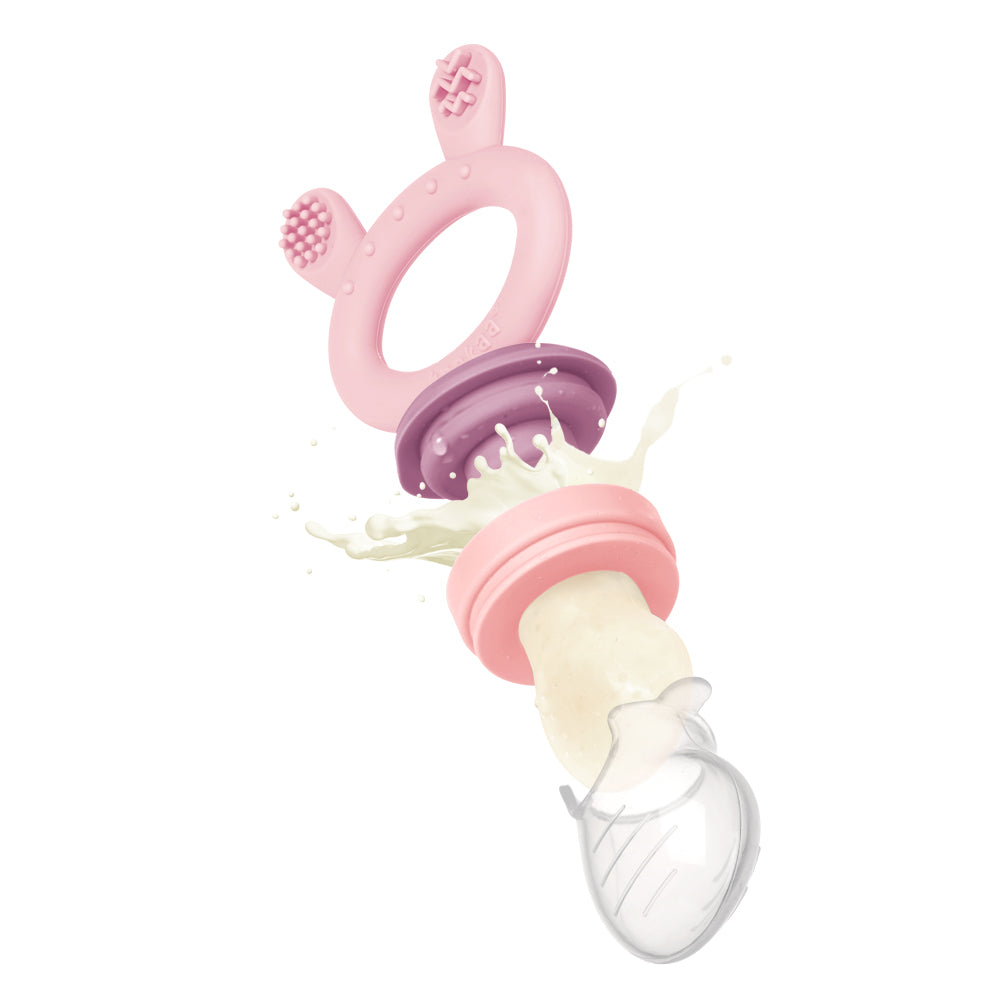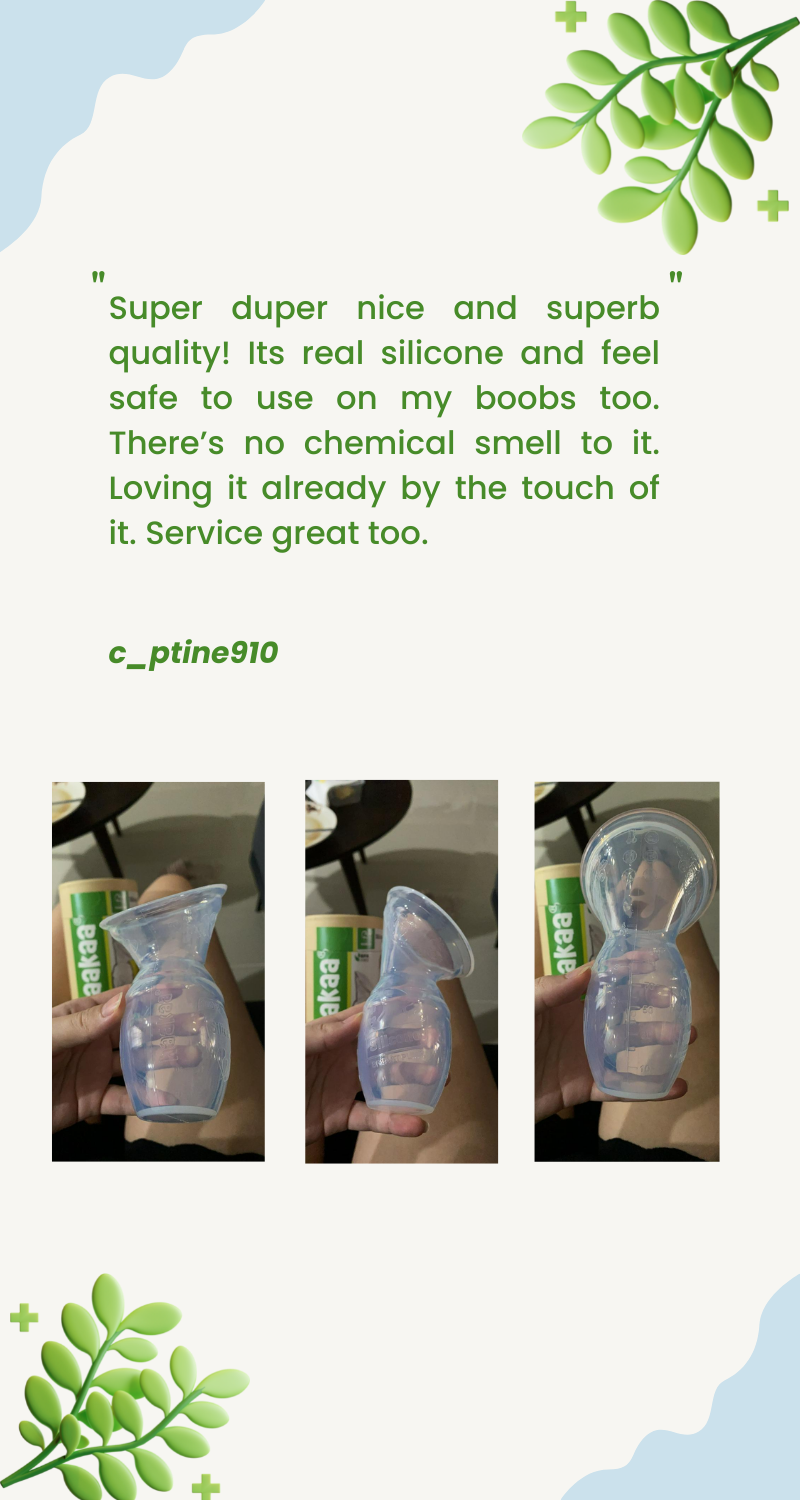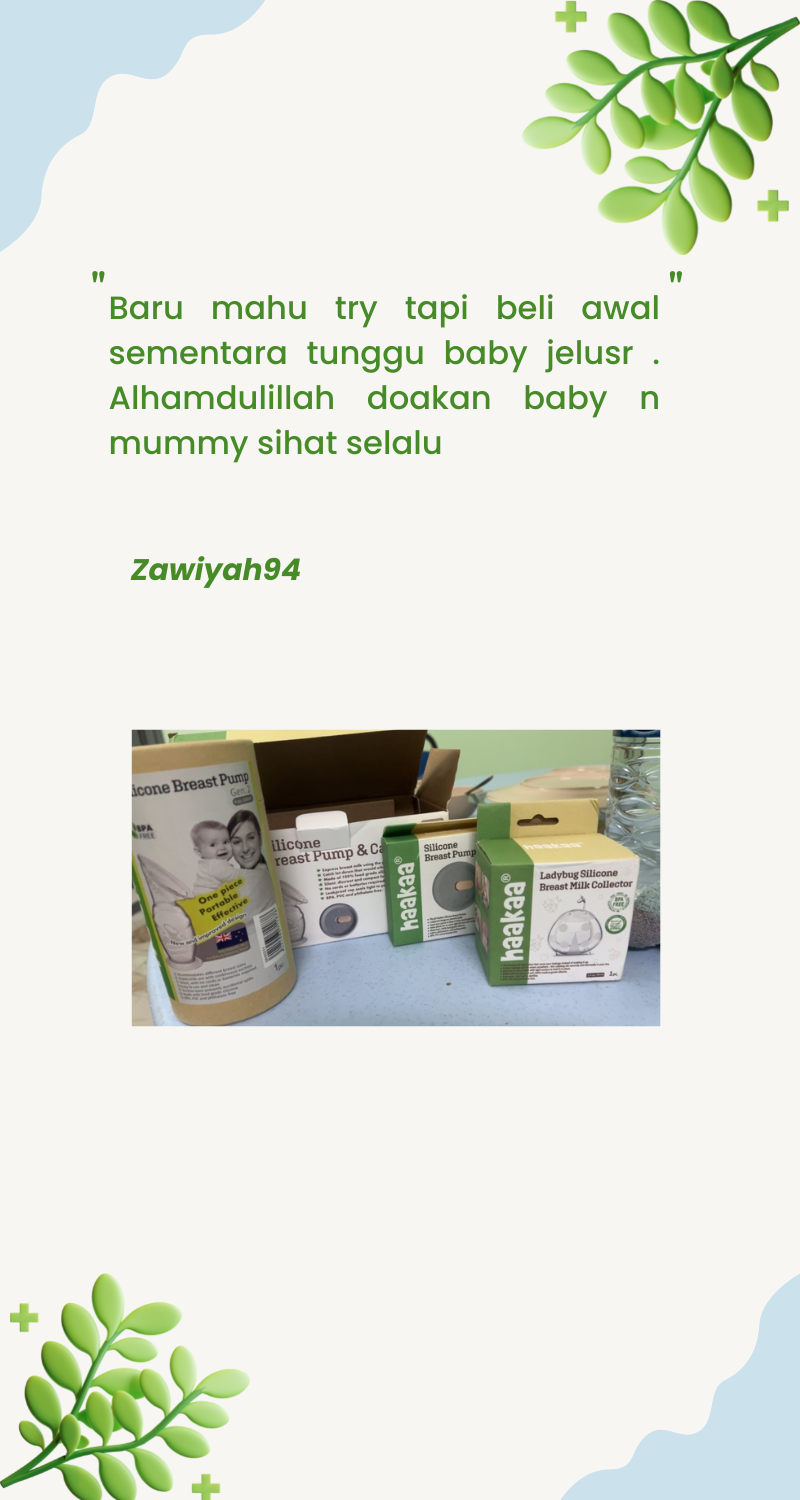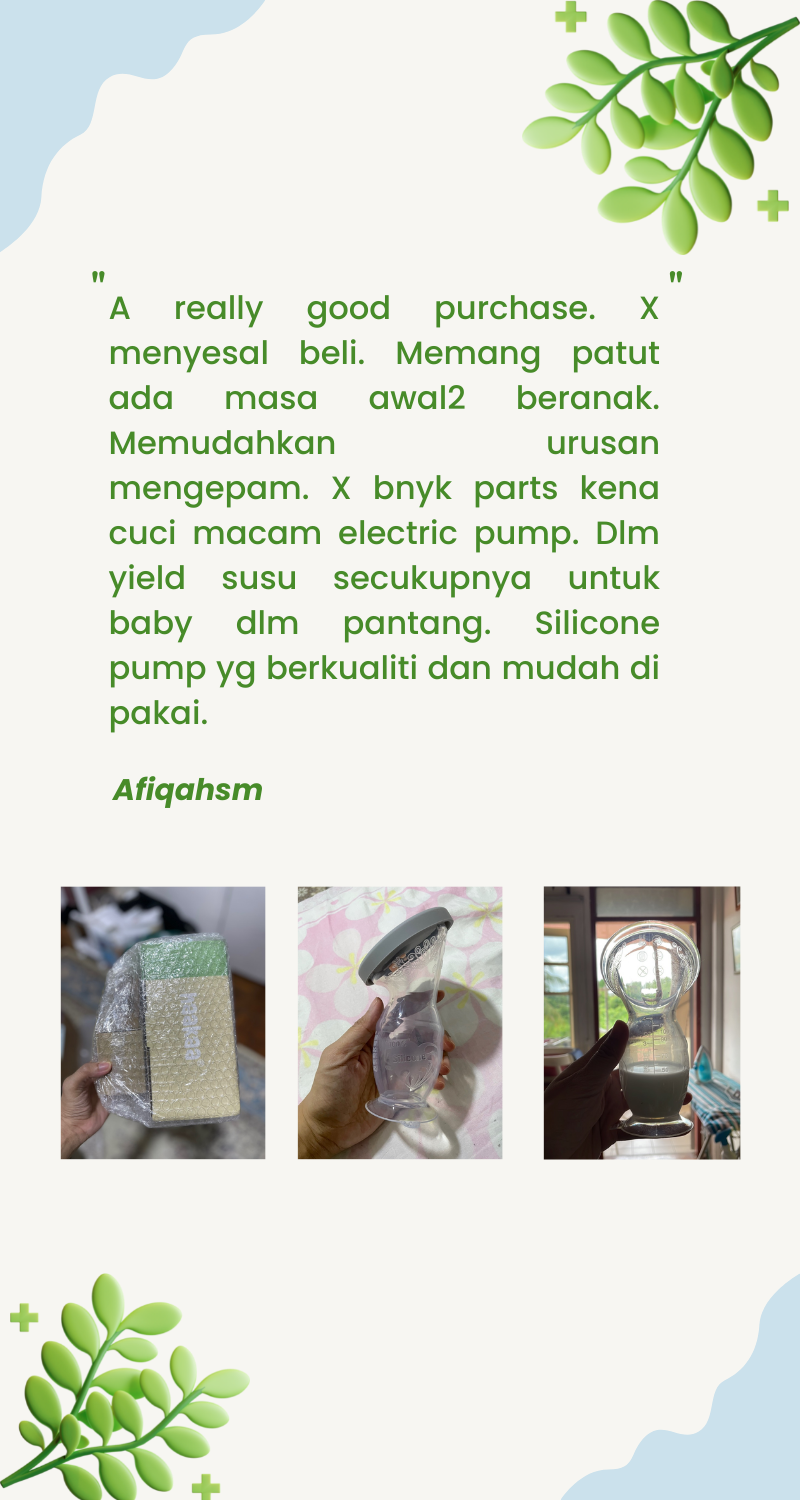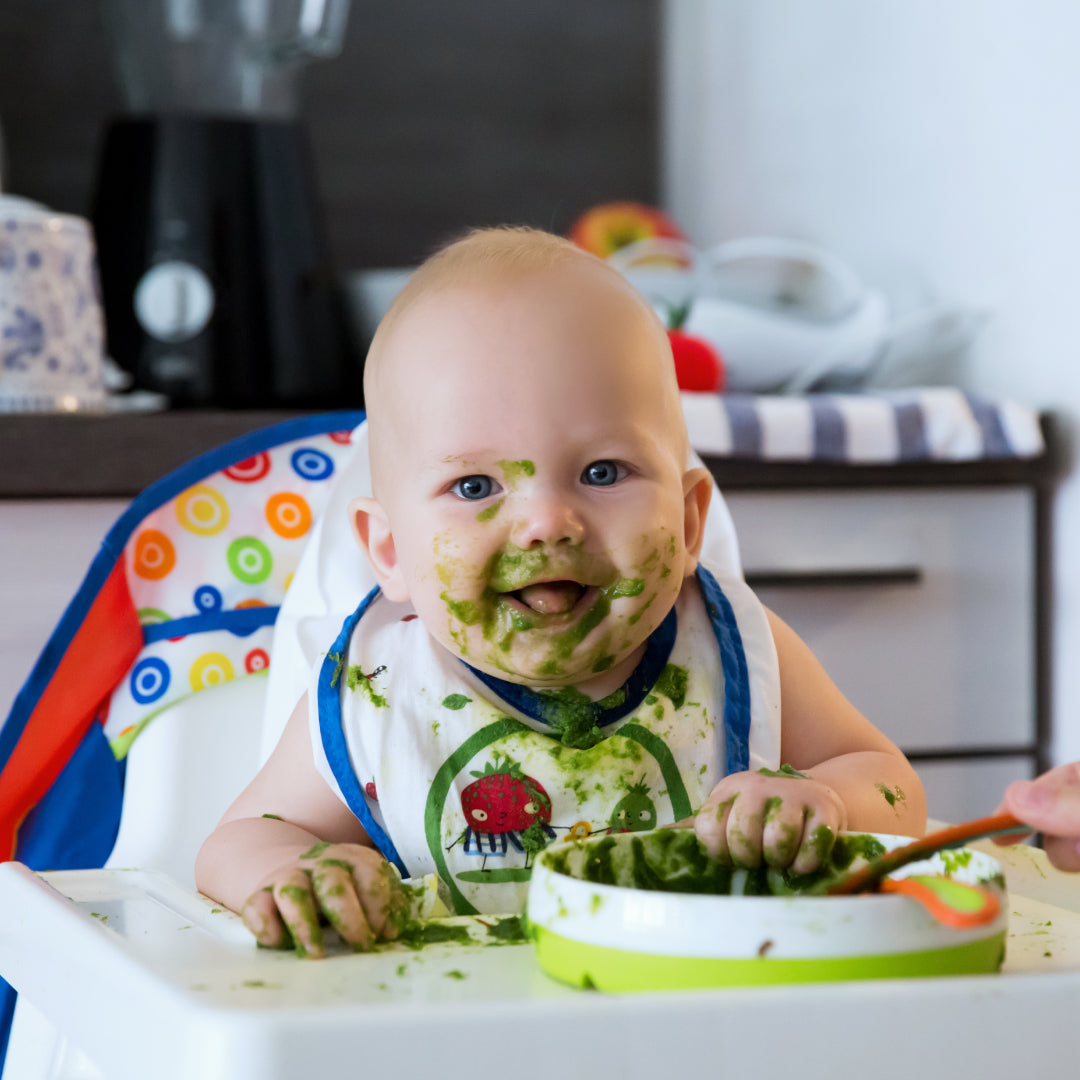
Starting your baby on solids is an exciting time, but the questions can feel overwhelming. What are the signs my baby is ready to start on solids? Which solids should I introduce first? Luckily there is a lot of good information out there, so let’s begin by looking at the official guidelines.
Official Guidelines + The First Feeds
In New Zealand, the Ministry of Health provides guidelines on how and when to introduce solids. General guidelines suggest introducing first solids to your baby when they’re around six months old – beginning earlier than this should only be done under consultation with a medical professional. Breast milk (or infant formula) provides most babies with all the nutrition they need until that point.
When deciding whether your baby is ready, there are some signs to look out for. Among the earliest signs parents notice is baby seeming hungry after a milk feed or showing interest in watching you eat. Other indications of interest your baby may make can include things like reaching out and opening their mouth while they’re watching you eat, or they may make chewing motions of their own. There are also two milestones to look out for before starting on solids: first, your baby should be able to hold their head up well on their own and sit upright while they’re supported (e.g. in a highchair); and second, when you touch their lip with a spoon, they should open their mouth. However, if they still move their tongue forward to push the food out, this can be an indication they aren’t quite ready yet. It’s important not to start solid food too early (for example, it is not recommended to start before four months old, and it’s preferable to wait until around six months of age), as their bodies may not be ready for solid food. The Ministry of Health also cautions that beginning solids too early can leave your baby more likely to develop eczema and food allergies.
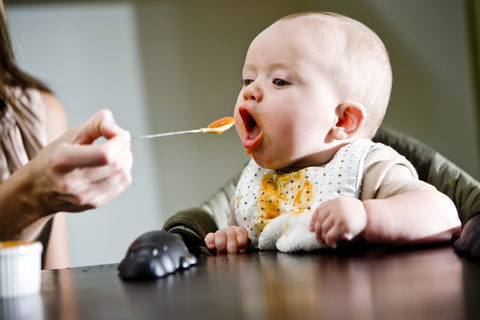
Once you’ve decided both you and bubs are ready and it is time to begin, you can start by giving your baby their usual milk feed. Then, when they’re done, offer smooth, soft foods without added salts, sugars or seasonings. This order will continue for the first couple of months – milk feed first, then top up with solid food. For the first few attempts, it’s helpful to offer that first feed when everyone is relaxed – afternoons, rather than breakfast or dinner, can often be an ideal time.
The next step is deciding what to give your baby. Start by offering only one new food at a time. The HealthyKids website has ideas for good first foods for your baby. Puréed fruits, vegetables and rice are all common starter foods and can be made in batches and frozen.
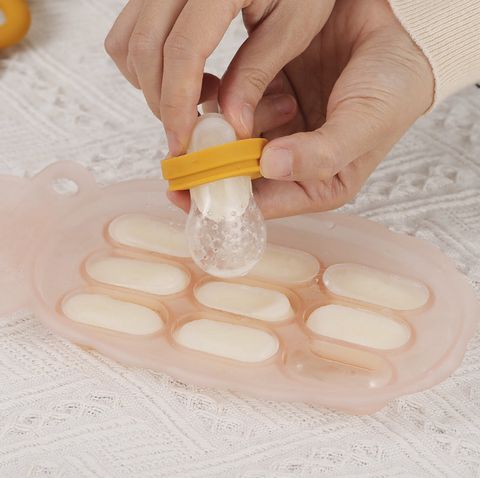
Helpful Products + Months 7-8
To help store all those purées you’ve worked hard to prepare, look no further than Haakaa’s Baby Food and Breast Milk Freezer Tray. It’s made from 100% food-grade silicone (so no nasty BPA, PVC or phthalates), and has perfectly sized compartments for those first meals. This is ideal when making your purées - save some for that day’s meal, then freeze the rest in conveniently sized portions! It even comes in two sizes – 6x 70ml compartments, or 9 x 35ml compartments. This makes portioning your baby’s first meals that much easier, while helping keep food from being wasted. Once bubs starts eating more, simply start popping out more than one serving!
Baby Food and Breast Milk Freezer Tray
RM89.00
The Ministry of Health suggests that from 7-8 months, your baby may be ready to move on from thin purées to thick purées, mashed foods and finger foods. Milk feeds will still be offered first before moving on to these new food options. To help with finger foods, a feeder can be helpful - and Haakaa has the perfect way to introduce these finger foods. The Fresh Food Feeder is made of food-grade silicone, and the pouch has small holes that allow only tiny pieces of food to pass through. The Feeder comes with a silicone pouch cover, letting you make frozen treats (such as breast milk or purées) – ideal for teething little ones. The handles come in a range of colours and are textured to help keep little hands entertained – and they’re super easy to hold! This Feeder lets your baby learn how to self-feed while developing their hand-eye coordination and improving their fine motor skills.
Fresh Food Feeder and Cover Set
RM89.00
8 Months +
Between 8 and 12 months, you can start giving your baby solids before their milk feeds, and they may be ready to start trying out lumpy foods or different textures. It’s important to remember that different babies have different likes and dislikes, just as adults do. Some will take to solids straight away, while others prefer to stick to milk at first. It can often take a few goes for a baby to decide they like a food – if they don’t like what they’re offered the first time, try something else for a few days, then try again with the disliked food. It can take up to ten tastes before a baby likes a new food. It’s also essential at these beginning stages to avoid small, hard round foods, such as nuts, grapes, berries, and popcorn – these are choking hazards to small babies. Stay with your baby while they are eating and encourage them to sit while enjoying their meals to help avoid the risk of choking.
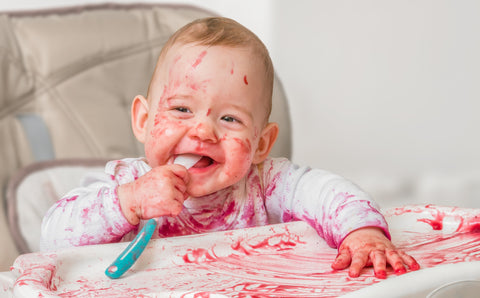
During those early days of eating solids, especially when they start trying to feed themselves, don’t be surprised if your baby seems to wear as much of their food as they eat! Learning to feed themselves is a crucial stage. A large part of this is developing their fine motor skills, as well as exploring the different tastes, smells, and textures of the foods they’re trying. Using their fingers to feel or squeeze food, and the age-old game of dropping things to the floor are ways children learn more about how to use their bodies and the world around them. Is it messy? Absolutely. It can be frustrating and involves a lot of time spent cleaning, but if you can see both the useful and the entertaining sides of this work they’re engaging in, this can be a truly rewarding time.





